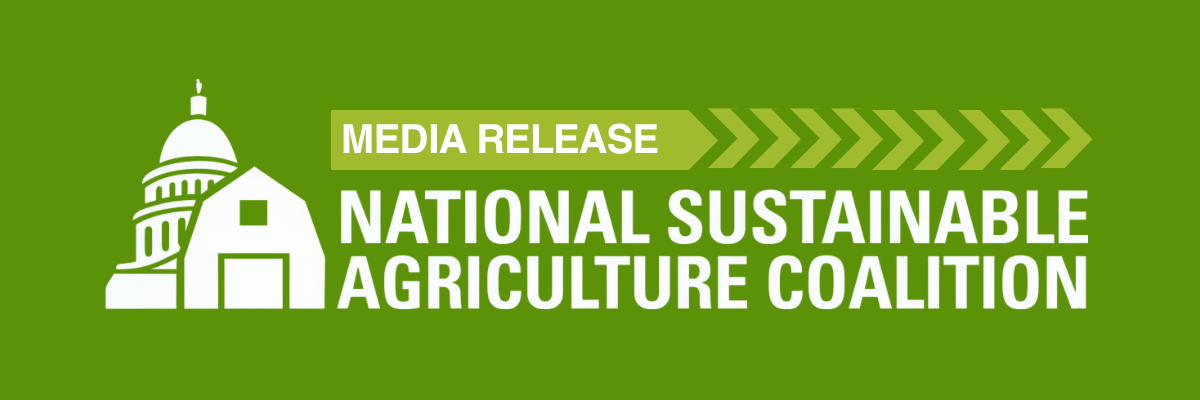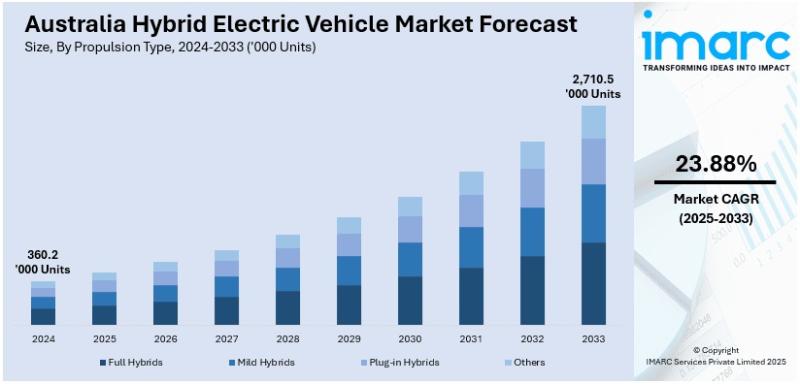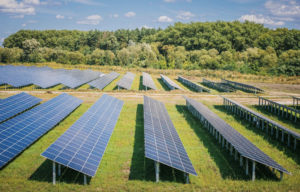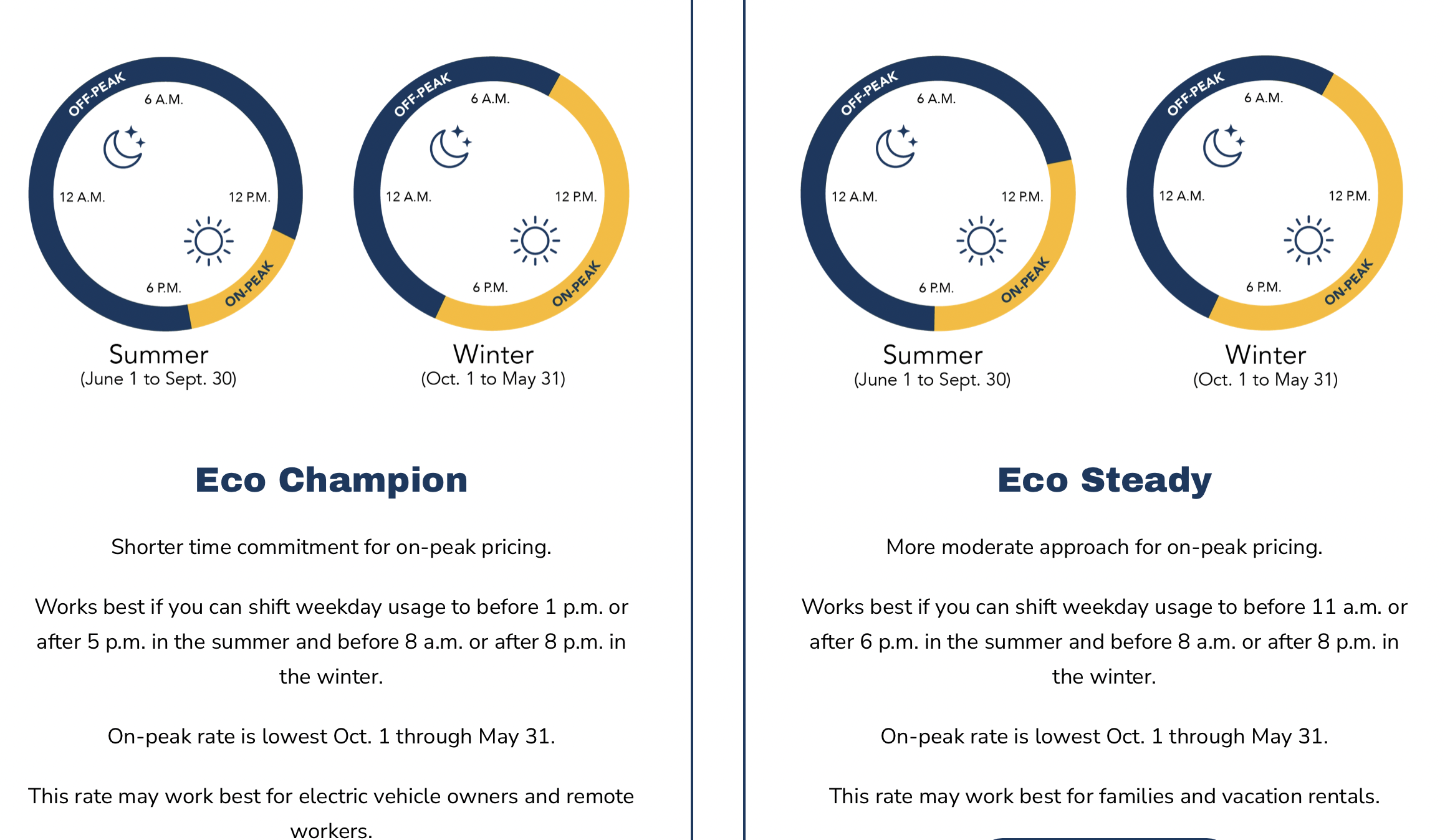Clean Energy Brought Data Centers to Iowa. The Big Beautiful Bill Could Change That – Inside Climate News
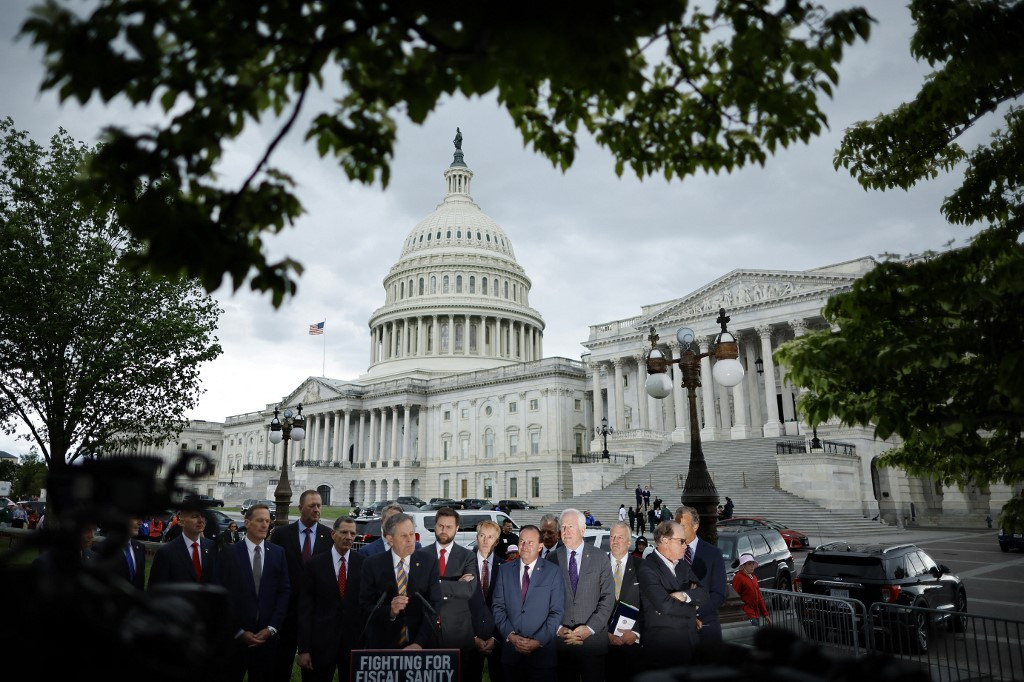
Report on Data Center Development in Iowa and its Alignment with Sustainable Development Goals
1. Executive Summary
The state of Iowa has become a significant hub for data center development, attracting billions of dollars in investment from major technology corporations. This growth has been largely driven by the state’s robust renewable energy infrastructure, particularly wind power. This report analyzes the synergy between Iowa’s data center boom and the United Nations Sustainable Development Goals (SDGs), focusing on industry, clean energy, and economic growth. It also examines potential legislative challenges that could undermine future progress toward these goals.
2. Fostering Sustainable Infrastructure and Economic Growth (SDG 8 & SDG 9)
Iowa has successfully attracted substantial investment in digital infrastructure, directly contributing to SDG 9 (Industry, Innovation, and Infrastructure). The presence of these facilities has also provided significant local economic benefits, aligning with SDG 8 (Decent Work and Economic Growth).
- Total Investment: Four major tech companies (Microsoft, Google, Meta, Apple) have invested nearly $17 billion in Iowa.
- Microsoft: Has invested between $5 billion and $6 billion across six data centers in West Des Moines, with a seventh planned. These centers have added $2 billion to the city’s tax base.
- Google: Has announced an additional $7 billion in investments for its Iowa campuses.
- Statewide Presence: A total of 27 data centers are currently operating or under construction in Iowa.
3. Advancing Affordable and Clean Energy (SDG 7) and Climate Action (SDG 13)
A primary driver for this investment is Iowa’s leadership in renewable energy, which allows corporations to meet their sustainability targets and advance SDG 7 (Affordable and Clean Energy) and SDG 13 (Climate Action).
Historical Context and Energy Profile
- Pioneering Policy: In 1983, Iowa was the first state to adopt a renewable portfolio standard, requiring utilities to purchase wind-generated power.
- Federal Incentives: The 1993 Wind Energy Incentives Act, sponsored by Senator Chuck Grassley, established the first nationwide tax credit for wind energy production.
- Current Status: Wind power now constitutes 60% of Iowa’s total energy mix, the highest percentage of any state. This has resulted in Iowa having the eighth-lowest average electricity prices in the U.S.
Corporate Sustainability Commitments
- Microsoft: Aims to be carbon-negative by 2030 and matches 100% of its Iowa data center energy consumption with contracted carbon-free electricity.
- Google: Aims for net-zero emissions by 2030. Its Council Bluffs campus runs on 95% carbon-free electricity.
- Meta (Facebook): Reports being net-zero since 2020 and matches 100% of its Iowa data center energy consumption with renewables.
4. Challenges to Sustainable Progress
Despite the progress, significant challenges exist regarding resource consumption and legislative changes that could impede the state’s alignment with the SDGs.
Resource Consumption (SDG 6 & SDG 12)
The high consumption of energy and water by data centers poses a challenge to SDG 6 (Clean Water and Sanitation) and SDG 12 (Responsible Consumption and Production).
- Water Usage: Microsoft’s data centers account for 2% to 7% of West Des Moines’ water use. Meta’s centers in Altoona use up to 16% of the city’s water supply.
- Energy Usage: Meta’s Altoona campus consumed approximately 1.2 million megawatt-hours of electricity in 2023, equivalent to powering 100,000 homes for a year.
Legislative Impact on SDG 7
The newly adopted “One Big Beautiful Bill Act” threatens to undermine Iowa’s renewable energy advantage by cutting incentives.
- Increased Costs: An analysis by Energy Innovation predicts the act could increase electricity rates in Iowa by 14% to 26%, with industrial consumers facing the most significant hikes.
- Investment Risk: The rising cost of energy may deter future data center investments, negatively impacting the state’s progress on SDG 8 and SDG 9.
5. Future Outlook and Partnerships for the Goals (SDG 17)
The future of sustainable development in Iowa’s tech sector is at a critical juncture. The response from stakeholders will be crucial for continued progress. This situation highlights the importance of SDG 17 (Partnerships for the Goals), as collaboration between government, private industry, and utility providers is essential.
In response to the legislative changes, Alliant Energy, a major utility, announced plans to add up to 1,000 megawatts of new wind energy generation by 2028. This move, designed to qualify for federal tax credits before they are phased out, demonstrates a proactive effort to maintain the state’s commitment to renewable energy and continue serving industrial clients like the new Google and QTS data centers. However, the long-term impact of the legislation on Iowa’s status as a leader in clean energy and sustainable industrial development remains uncertain.
SDGs Addressed in the Article
- SDG 7: Affordable and Clean Energy
- SDG 8: Decent Work and Economic Growth
- SDG 9: Industry, Innovation, and Infrastructure
- SDG 11: Sustainable Cities and Communities
- SDG 13: Climate Action
Specific SDG Targets Identified
SDG 7: Affordable and Clean Energy
- Target 7.2: By 2030, increase substantially the share of renewable energy in the global energy mix.
- The article highlights Iowa’s leadership in wind energy, stating, “Wind now accounts for 60 percent of Iowa’s total energy mix—the highest percentage of any state.” This directly relates to increasing the share of renewables. It also traces the growth from just 1% in 2001, showing a substantial increase over time.
- Target 7.a: By 2030, enhance international cooperation to facilitate access to clean energy research and technology… and promote investment in energy infrastructure and clean energy technology.
- The article discusses how Iowa’s policies, such as the renewable portfolio standard and tax incentives, have promoted massive investment in wind energy infrastructure. This has attracted tech giants like Microsoft, Google, and Meta, who have invested billions of dollars, thus promoting investment in clean energy infrastructure.
SDG 8: Decent Work and Economic Growth
- Target 8.2: Achieve higher levels of economic productivity through diversification, technological upgrading and innovation…
- The article details the massive influx of investment from high-tech companies into Iowa, diversifying its economy beyond traditional agriculture. It states, “These four companies alone have invested nearly $17 billion into their data centers in Iowa,” which represents a significant technological upgrade and boost to economic productivity for the state and local communities like West Des Moines.
SDG 9: Industry, Innovation, and Infrastructure
- Target 9.1: Develop quality, reliable, sustainable and resilient infrastructure… to support economic development and human well-being…
- The core topic is the development of data center infrastructure in Iowa. The article describes the construction of numerous large-scale data centers by Microsoft, Google, and Meta. The sustainability of this infrastructure is a key theme, as its development is driven by the availability of renewable energy.
- Target 9.4: By 2030, upgrade infrastructure and retrofit industries to make them sustainable, with increased resource-use efficiency and greater adoption of clean and environmentally sound technologies…
- The article explains that tech companies are drawn to Iowa to meet their sustainability goals by powering their data centers with clean energy. It notes, “Microsoft matches 100 percent of Iowa data center energy consumption with contracted carbon-free electricity, and the same is also true for Meta.” This is a direct example of adopting clean technologies to make industrial infrastructure sustainable.
SDG 11: Sustainable Cities and Communities
- Target 11.3: By 2030, enhance inclusive and sustainable urbanization and capacity for… sustainable human settlement planning and management…
- The article touches on the effects of data center development on local communities. It mentions the positive economic impact, noting that Microsoft’s investment “propelled West Des Moines to the third-highest assessed property value in the state.” It also highlights sustainability challenges in urban management, such as the significant water consumption by these facilities, stating that Meta centers “use up to 16 percent of the city water supply” in Altoona.
SDG 13: Climate Action
- Target 13.2: Integrate climate change measures into national policies, strategies and planning.
- The article discusses state-level policies related to climate action. It describes Iowa’s historical pro-renewable energy policies (renewable portfolio standard, tax credits) and contrasts them with the new “One Big Beautiful Bill Act,” which “could undermine Iowa’s status as a growing destination for data centers” by cutting renewable energy incentives. This demonstrates how climate-related measures are integrated, or rolled back, in policy and planning.
Indicators for Measuring Progress
SDG 7: Affordable and Clean Energy
- Indicator 7.2.1: Renewable energy share in the total final energy consumption.
- The article explicitly provides this data: “Wind now accounts for 60 percent of Iowa’s total energy mix.”
- Implied Indicator: Financial flows to the state for clean energy infrastructure.
- The article quantifies the investment attracted by Iowa’s renewable energy: “Microsoft has invested between $5 billion and $6 billion,” and “These four companies alone have invested nearly $17 billion into their data centers in Iowa.”
SDG 8: Decent Work and Economic Growth
- Implied Indicator: Value added by industry/investment in high-tech sectors.
- The article provides specific investment figures that serve as a proxy for economic growth and productivity: “Google announcing another $7 billion in investments in its Iowa campuses over the next two years.” It also mentions the effect on the local tax base in West Des Moines.
SDG 9: Industry, Innovation, and Infrastructure
- Implied Indicator: Proportion of industry powered by clean energy.
- The article provides specific figures for data centers: “Google’s Council Bluffs, Iowa, data center campus runs on 95 percent carbon-free electricity,” and “Microsoft matches 100 percent of Iowa data center energy consumption with contracted carbon-free electricity.”
SDG 11: Sustainable Cities and Communities
- Implied Indicator: Water usage by industrial consumers.
- The article provides data on the strain on local resources: “Microsoft’s data centers in West Des Moines account for 2 to 7 percent of the city’s water use, while Meta centers in nearby Altoona use up to 16 percent of the city water supply.”
SDG 13: Climate Action
- Implied Indicator: Corporate commitments to carbon reduction.
- The article lists specific corporate climate goals: “Google advertises a global goal of net-zero emissions by 2030, while Microsoft aims to be carbon-negative in the same time frame and Meta reports being net-zero since 2020.”
Summary of SDGs, Targets, and Indicators
| SDGs | Targets | Indicators |
|---|---|---|
| SDG 7: Affordable and Clean Energy | 7.2: Increase substantially the share of renewable energy in the global energy mix.
7.a: Promote investment in energy infrastructure and clean energy technology. |
Indicator 7.2.1: Renewable energy share in total energy consumption (“Wind now accounts for 60 percent of Iowa’s total energy mix”).
Implied: Financial investment in clean energy infrastructure (Nearly “$17 billion” invested by tech companies). |
| SDG 8: Decent Work and Economic Growth | 8.2: Achieve higher levels of economic productivity through diversification, technological upgrading and innovation. | Implied: Investment in high-tech sectors (Google’s planned “$7 billion” investment; Microsoft’s investment adding “$2 billion to the city tax base”). |
| SDG 9: Industry, Innovation, and Infrastructure | 9.1: Develop quality, reliable, sustainable and resilient infrastructure.
9.4: Upgrade infrastructure and retrofit industries to make them sustainable. |
Implied: Number and scale of sustainable infrastructure projects (Six Microsoft data centers built, a seventh planned).
Implied: Proportion of industry powered by clean energy (“Google’s… campus runs on 95 percent carbon-free electricity”; Microsoft and Meta match 100%). |
| SDG 11: Sustainable Cities and Communities | 11.3: Enhance inclusive and sustainable urbanization and capacity for sustainable human settlement planning. | Implied: Water usage by industrial consumers (“Meta centers in nearby Altoona use up to 16 percent of the city water supply”). |
| SDG 13: Climate Action | 13.2: Integrate climate change measures into national policies, strategies and planning. | Implied: Existence of policies supporting/hindering renewable energy (Iowa’s historical incentives vs. the “One Big Beautiful Bill Act”).
Implied: Corporate commitments to carbon reduction (Google’s net-zero goal, Microsoft’s carbon-negative goal). |
Source: insideclimatenews.org

What is Your Reaction?
 Like
0
Like
0
 Dislike
0
Dislike
0
 Love
0
Love
0
 Funny
0
Funny
0
 Angry
0
Angry
0
 Sad
0
Sad
0
 Wow
0
Wow
0












































